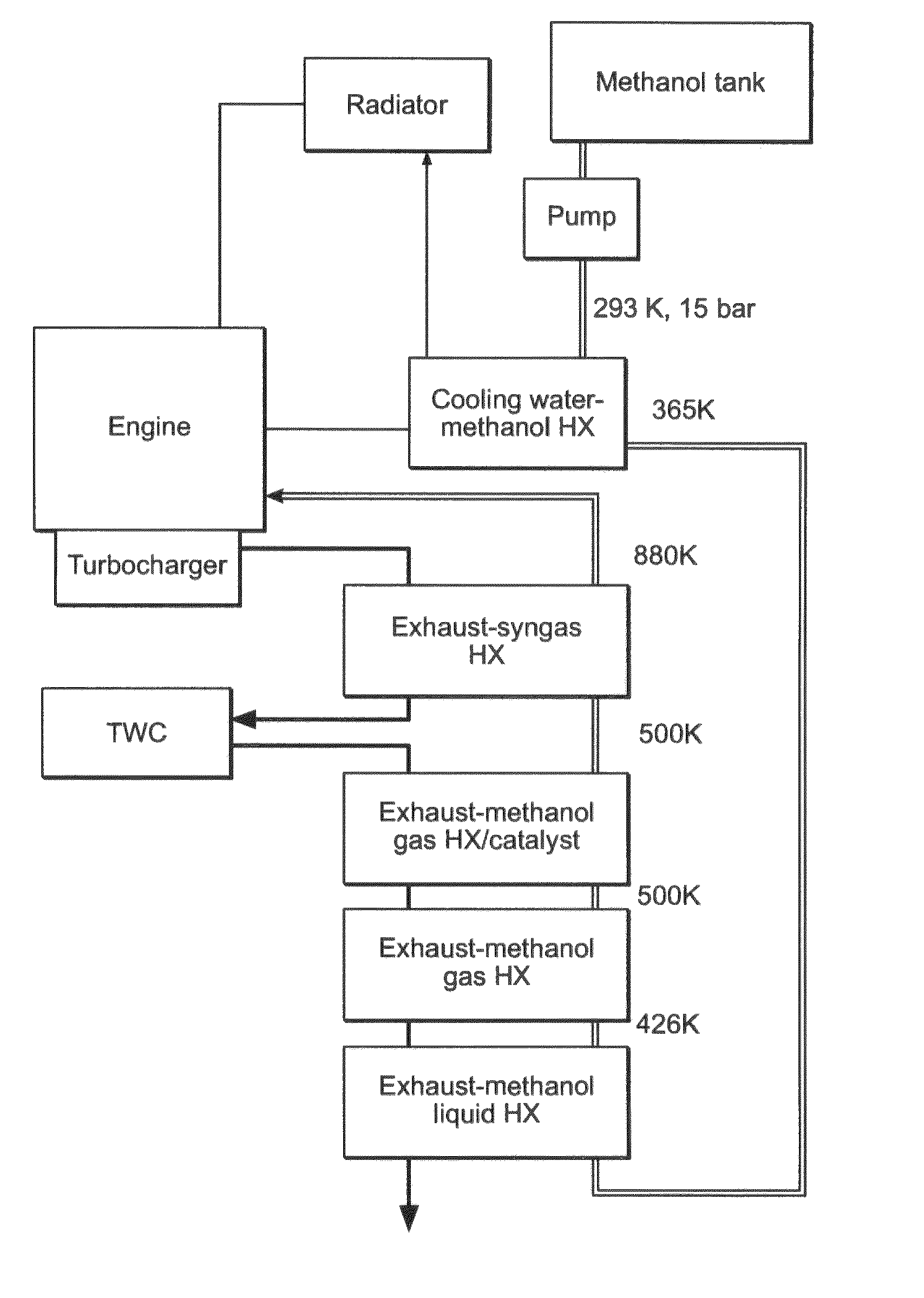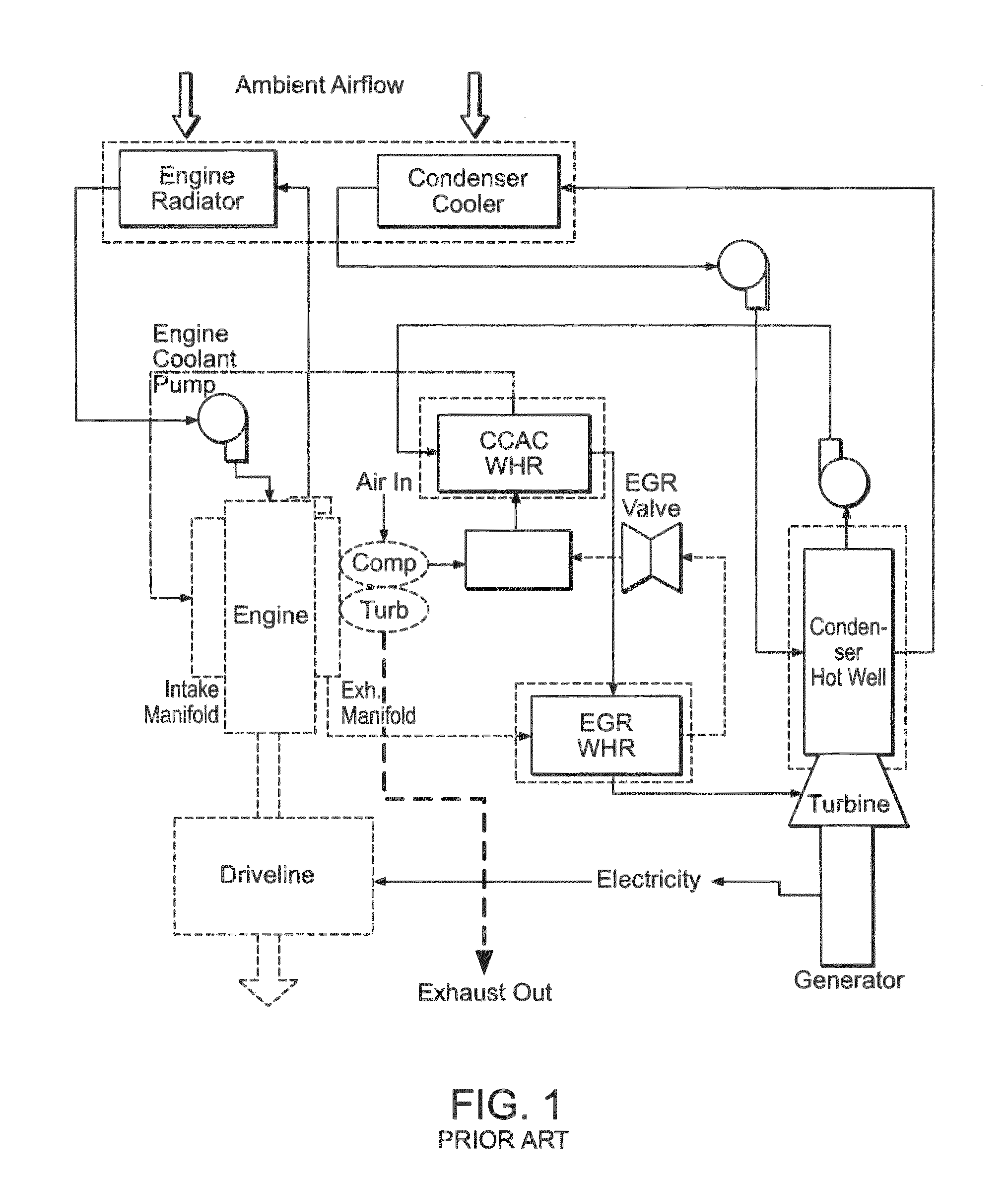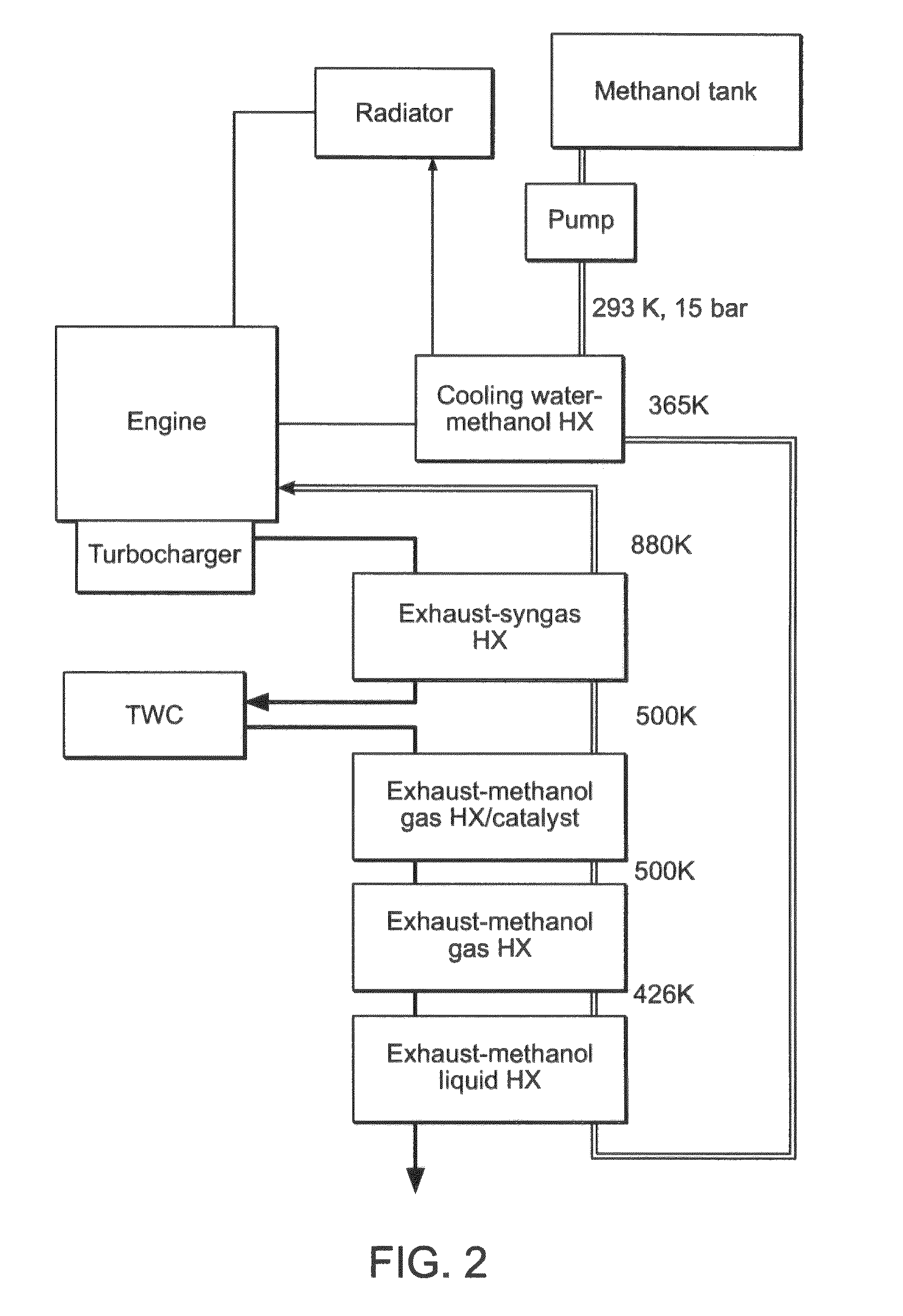Ultra-high efficiency alcohol engines using optimized exhaust heat recovery
a technology of exhaust heat recovery and alcohol engines, which is applied in the direction of machines/engines, mechanical equipment, electric control, etc., can solve the problems of reducing the efficiency of methanol-fueled engines, requiring a complicated and expensive system to recondense organic working fluid, and achieving the effect of improving efficiency, maximizing the amount of methanol, and high compression ratio
- Summary
- Abstract
- Description
- Claims
- Application Information
AI Technical Summary
Benefits of technology
Problems solved by technology
Method used
Image
Examples
Embodiment Construction
[0045]We have performed preliminary calculations of heat recovery from present methanol reforming and Rankine cycle heat recovery systems. We used the engine model developed by Blumberg and Bromberg [P. N. Blumberg, L. Bromberg et al., Simulation of High Efficiency Heavy Duty SI Engines Using Direct Injection of Alcohol for Knock Avodiance, SAE Report 2008-01-2447].
[0046]The model is based upon a 7 liter engine spark ignition (SI) engine which is considered as a replacement for 11 liter Volvo HD diesel engine. The potential for energy recovery from the exhaust have been discussed previously by Bromberg, and Cohn [L. Bromberg and D. R. Cohn, SAE technical paper 2010-01-2199], although the method capable of recovering the energy was not discussed.
[0047]Table 2 shows the results of the model. There are two sets of assumptions, depending on whether the conditions downstream from the turbine or upstream from it are used. The turbocharger has not been included in the model for the upstrea...
PUM
 Login to View More
Login to View More Abstract
Description
Claims
Application Information
 Login to View More
Login to View More - R&D
- Intellectual Property
- Life Sciences
- Materials
- Tech Scout
- Unparalleled Data Quality
- Higher Quality Content
- 60% Fewer Hallucinations
Browse by: Latest US Patents, China's latest patents, Technical Efficacy Thesaurus, Application Domain, Technology Topic, Popular Technical Reports.
© 2025 PatSnap. All rights reserved.Legal|Privacy policy|Modern Slavery Act Transparency Statement|Sitemap|About US| Contact US: help@patsnap.com



